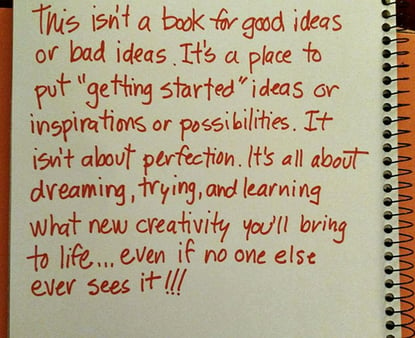This week's "Inside the Executive Suite" from the Armada Executive Intelligence Brief newsletter highlighted two Wall Street Journal articles examining leadership strategy in light of how involved a teacher or coach should be in the details of teaching and learning.
Leadership Strategy - How Much Teaching and Coaching Is Enough?
When it comes to your leadership strategy, what are the best techniques to develop your team? Should you be in the thick of things, understanding the details of what is going on with team members, and being an active resource for them? Or are they (and you) better off taking a hands-off approach and letting them handle the details relatively unencumbered?
In the Wall Street Journal this week, two articles addressed these questions from different angles.
An article by concert pianist and instructor, Byron Janis, addressed teacher-student relationships in music. Andrew Beaton addressed the topic of college football coaches forsaking their CEO-like management roles to create game plans, call plays, and behave like traditional coaches.
Learning to Play Music Pleasing to Another's Ears
Janis offers advice gleaned from his own teaching experiences and from his time as a student of piano great Vladimir Horowitz during the 1940s. He shares four pieces of advice for teachers (that can extend to leaders and managers):
-
Don't over-teach to a specific standard
Teachers must balance their knowledge and inclinations to instruct what THEY know with the students’ needs to find and develop their own styles. A student only develops a distinctive talent and style if a teacher remains open and refrains from over-instructing based on what the teacher believes and knows.
Leadership Questions: How much latitude do you give less experienced team members to chart their own directions? Are there areas where you dictate a course of action that would benefit from junior team members exerting greater independence?
-
Let individuals own their problems and solutions
When a student failed to grasp a particular musical passage, Horowitz would tell the student that something was amiss without indicating what it was. He invited them to ponder it, address what they discover, and return the next week to share the correction. This technique puts students in charge of making mistakes, identifying them, and determining the appropriate fixes.
Leadership Questions: How readily do you dissect errors and problems in detail? What room do you have to point out potential issues while allowing your team an opportunity to diagnose and correct them to develop their mistake-making and fixing skills?
-
Provide ample room to disagree and interpret your input
Teachers can further free students to self-diagnose and correct problems through realizing their own subjective interpretations of performance strategies can be mistaken. Student can have creative perspectives that are on the mark even though instructors don’t understand them. As Horowitz told students, "'If any of my interpretive ideas don't feel right, please disregard them."
Leadership Questions: Are you providing team members enough creative freedom in subjective areas to listen to your viewpoint, while applying their own ideas for implementing strategies? What techniques do you employ to keep your mind open to creative perspectives different from your own?
-
Encourage a unique, personal path
It is easy, especially for individuals that strive to be perfect, to take in a more senior person's vision, trying to mimic it as closely as possible. Instead, Janis recommends teachers show students that inspiration and expression are not primarily the byproducts of learning and practicing. They develop from actively living a varied, diverse life. He points out, in closing the article, that life "is perhaps the most important teacher of all. Hard work alone is not the solution."
Leadership Questions: When new team members (especially junior ones) join your organization, how much onboarding involves instruction? In contrast, how much onboarding involves getting them started experiencing their new environment and actively doing and trying things right away? What opportunities are you creating to provide room for them to bring personal life learnings to your team to increase diversity and your team's performance?
Getting Back into Coaching
While Byron Janis’ article emphasizes student-driven and owned learning as a teacher uses a gentler hand, Andrew Beaton's perspective how active college coaches are in actually coaching raises an intriguing counterpoint.
Beaton points to former University of Texas head football coach, Mack Brown, as a forerunner in the "CEO style of coaching." With coaches at major programs finding themselves in charge of well over a hundred players and staff (plus a nearly comparable number of prospective students they are monitoring), the head coaching role in college football has changed dramatically. Dedicated coordinators build game plans and make play calls during games. A variety of other "middle managers" assume implementation roles for the team.
Put it all together, and the head coach can feel disconnected and limited during a Saturday game.
That's why some coaches are reversing the trend. A group that includes new University of Miami coach, Mark Richt, is re-working the head coaching role. Richt is prioritizing working with the team's quarterbacks, designing game plans, and calling plays during the game. Richt and other coaches are devoting more time toward the Xs and Os of football as a way to tackle the classic dilemma of managers that developed as workers: promotions into senior positions remove them from the strong expertise and performance that originally earned their promotions.
Leadership Questions: If you made the transition from worker to manager in your career, how much time do you spend still doing? Are you doing enough doing to keep your skills and perspectives relevant? Or have you long ago walked away from daily activities that generate the value and benefit your team delivers to internal and external audiences? If you see yourself as too removed from daily team activities, what are the best ways to get closer to what your organization does?
It’s about a Balance that Keeps Moving
As with most leadership topics, the only clear direction is that what you do depends on your situation. And in this case, it may vary by specific team member. All of us as leaders need to determine the right balance to guide and grow our teams, and only you may know the right answer! – via “Inside the Executive Suite”
If you enjoyed this article, subscribe to the free Brainzooming blog email updates.
Facing Innovation Barriers? Here Is Help!
Are you facing organizational innovation barriers related to:
-
The fear of change?
-
Scarce resources?
-
Limited innovation perspectives?
-
An overly-internal focus?
-
Multiple innovation challenges?
We have free Brainzooming eBooks for you to help navigate barriers and boost innovation!





